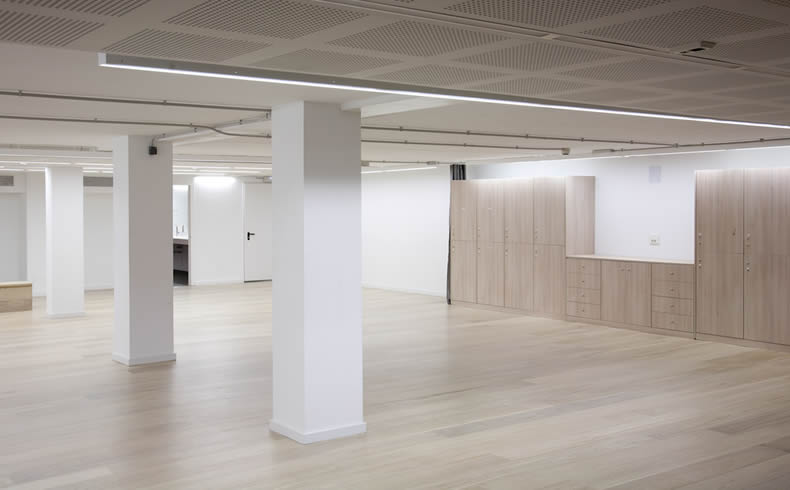A brief history
The history of the Mercat de les Flors as a municipal theatre goes back to 1983, when the then Councillor for Culture, Maria Aurèlia Capmany, and the mayor of Barcelona at that time, Pasqual Maragall, instigated the creation of this city performance space with the renovation of the Palace of Agriculture, built for the 1929 International Expo on the mountain of Montjuïc. After the premiere of the play The Tragedy of Carmen, by Peter Brook, the Mercat launched an irresistible programme of international shows and artists and, naturally, Catalan ones too. In the old warehouse of the Palace of Agriculture, Brook had found an ideal performance space for his play and managed to transmit his enthusiasm to the city’s cultural authorities. This space and the rest of the Mercat de les Flors was remodelled and opened as a municipal theatre in 1985 with the premiere of Mahabarata, once again with Peter Brook directing.
The great dome, twelve metres in diameter, which covers the Mercat entrance hall, is the work of the Majorcan artist Miquel Barceló. In 1990, the City Council began the enlargement of the Mercat de les Flors, adding a new venue, the so-called B Space (Espai B), adjacent to the main building of the Mercat, and which was later named the Sala Ovidi Montllor. This space was eventually demolished to make way for the construction of the Institut del Teatre, including a new performance space on its premises, with the same name, which currently shares the programming with the Mercat. Therefore, the Mercat has four venues with uninterrupted programming: the Sala Maria Aurèlia Capmany, the Sala Ovidi Montllor, the Sala Sebastià Gasch, which hosts small-scale activities, and the Sala Pina Bausch, a multipurpose auditorium also for small-scale activities.
The theatre, even in its beginnings, aimed to set an example in all types of creative expression: theatre, dance, music, performances, media art. Directors such as the aforementioned Peter Brook, Luca Ronconi, Peter Stein, Patrice Chéreau, Carlos Marqueríe, Robert Lepage, Tadeusz Kantor, Anatoli Vassiliev, Mario Gas, Calixto Bieito and Roger Bernat; national companies and figures such as La Fura dels Baus, Comediants, Els Joglars, La Cubana, Sèmola Teatre, Sol Picó, Mal Pelo, Àngels Margarit, La Carnicería Teatro and Teatro de la Abadía; international ones such as Phillipe Genty, Wim Vandekeybus, La La La Human Steps and Rosas; festivals such as ArtFutura, Festival Àsia and Primavera Sound; cinema with the presence of directors such as Fernando Trueba, Fernando León, Joaquim Oristrell and Jaume Balagueró; or music with La Paquera de Jerez, Carlos Santos, Georges Moustaki and many, many others, have made the Mercat de les Flors a touchstone for the performing arts and contemporary creativity in Catalonia. Since it opened, the Mercat has been directed by Joan M. Gual (two terms), Elena Posa and Andreu Morte (also on two occasions) and Francesc Casadesús. The current director is Àngels Margarit. The Mercat de les Flors is part of the amenities that make up the so-called Ciutat del Teatre (City of Theatre), which consists of three theatre venues in the surroundings of the Plaça Margarita Xirgu: the Mercat itself, Teatre Lliure and Institut del Teatre.




